- Home
- H A CULLEY
The Path to the Throne Page 9
The Path to the Throne Read online
Page 9
It appeared that the constable hadn’t stayed with his unfortunate men but had crossed back over the river and taken refuge with the girl’s father, anticipating, probably correctly, that Edward would have hanged him for losing the castle. The most serious consequence of its loss was the inability of his army to cross over the ford as his men would be bombarded by the mangonels and trebuchets in the castle. The king came to the conclusion that he would have to take Wark Castle before he could invade Scotland. His one consolation was that the castle only had the usual supplies to last the garrison a few weeks as, at the end of winter, most of the dried meat, live pigeons and grain would have been used up.
The Scots had stupidly brought their women and children with them and so there were perhaps a couple of hundred mouths to feed, instead of the forty that there had been in the English garrison. They would be lucky to make their provisions last a month so Edward settled down to starve them out. The other consequence of this set-back was to infuriate Edward beyond measure. Once he was across the Tweed he would be in no mood to be lenient to the Scots who had risen against him.
The Laird of Coldstream realised that his position in Wark Castle was untenable. The Scots army had returned to the north shore and, under cover of a raid by them across the river, the men, women and children in the castle made good their escape over the ford. All that the Scots had gained was a respite of four days.
Unaccountably the Scots then withdrew towards Berwick. Robert was one of the first commanders across the Tweed and caught up with a party of stragglers from Balliol’s army near Ladykirk, just north of the ford at Norham. They told him that the rumour amongst their ranks was the King John had vacillated between holding the ford at Wark and retreating to Berwick or Roxburgh, where there were strong castles. Their lord, the Earl of Fife, had opted for Berwick but John Balliol and several of the other earls had headed for Roxburgh.
When Edward arrived outside Berwick upon Tweed he sent his herald forward to deliver an ultimatum. The town had twenty-four hours to surrender or he would attack and kill every adult male in the place. The Earl of Fife had the good sense to withdraw northwards when he heard that the English were headed towards Berwick, rather than to Roxburgh, where the main Scottish army was encamped.
The Berwickers had no reason to be arrogant. Although the stone-built castle would be very difficult to assault, the town itself was only protected by a wooden palisade fifteen feet high. Nevertheless the governor of the town responded with a message of defiance, secure in the promise that John Balliol was advancing from Roxburgh to trap the English between his army and the town walls.
This was indeed the king’s intention, until he got cold feet and dithered at Roxburgh. When the herald rode forward again the next morning to demand the surrender of Berwick, the governor was still confident that the town would shortly be relieved.
‘Tell your king to go home. He has no business here and we don’t take orders from him, only from our own king, John Balliol.’
Many of the citizens of Berwick were less polite and stood on the parapet around the top of the town palisade facing away from the English and exposed their bare posteriors to them. Naturally, this enraged the English and they were eager to teach the Berwickers a hard lesson when Edward launched them at the town’s defences.
Berwick had grown in importance during the last century and now housed the Scottish Royal Mint as well as being the country’s premier port. As a major commercial centre, there were many foreign merchants in the town, notably from the Hanseatic League and from Flanders. The latter’s trading centre was called the Red Hall, a well-fortified building beside the quayside which housed the traders, their families and the warehouses.
It was here that Edward tried to land men first but it was low tide and the first two ships from his fleet lying off the Tweed Estuary ran aground. The gleeful Berwickers manned their fishing boats and rowed out to the immobilised ships and set them alight. When the crew leaped into the water, which was little more than waist high, the Scots smashed in their heads with oars, clubs and axes.
Edward watched from a hill further upriver, his lips tightening as his fury grew.
‘Send in the foot soldiers to storm the palisade. They are to spare the women and children, but kill every man they find inside this shit-heap of a town,’ he growled at the Earl of Surrey, who had been appointed as his marshal.
The foot rushed forward with siege ladders, supported by the Welsh longbowmen and the crossbowmen in Edward’s army. The Scots had very few bowmen amongst the townspeople, and those that they did have were too frightened to stick their heads above the parapet and shoot back. There were professional soldiers in Berwick but they were all in the castle and had no intention of quitting its high stone walls to join the townspeople.
Robert Bruce sat on his horse with the other nobles watching the assault with sadness. If only the Berwickers had had the sense to surrender their town they could have been spared what he knew was to follow. He had never taken part in the sack of an enemy settlement but he had heard the stories told by both perpetrators and victims. Although some of the ladders were thrown down before the soldiers could reach the top, the walls were relatively low and it wasn’t long before the soldiers gained a foothold on the parapet. Once there, the defenders, who were untrained and poorly armed for the most part, were slaughtered.
Despite King Edward’s order that women and children were to be spared, this were ignored by the blood-crazed English, intent as they were on revenge for the insults given them and for the deaths of the sailors and soldiers on the two ships.
Some of the women and children managed to escape out of the East Gate that led to the cliffs overlooking the sea and the guard detachment placed there by Edward let them pass, but they killed any men or older boys who tried to escape with them. Inside the town was mayhem. Bodies of the inhabitants lay everywhere. The Berwick men had managed to kill some of the soldiers and these were mutilated: their genitals were cut off and stuffed in their mouths or their backsides were exposed. Of course, this just enraged the English even more.
Women, young girls and even small children were raped repeatedly before being killed, if they hadn’t already died from their ordeal. Then wisps of smoke appeared as buildings were torched. The foreign merchants and even the English who lived in Berwick were not immune. The one place that held out was the Red Hall.
The Flemings had crossbows and they shot down anyone who came near. Edward’s answer to this was to bring up a mangonels which fired flaming bundles of straw over the walls of the Red Hall, setting light to the buildings around the central courtyard. The Flemings had a choice: either be burnt to death or suffocated by smoke or else surrender. They chose the latter and were then cut down, men women and children, as they stood defenceless on the quayside. It seemed to count for nothing that the Flemings were Edward’s allies in his conflict with France.
Eventually the blood-lust of the attackers was sated and the town with its thousands of dead was left for the night. In the morning the hung-over soldiers and even those who were still drunk were ordered back into the town to start to clear it of bodies before disease could take a hold. Most of the bodies were thrown into the Tweed to be carried out to sea on the ebb tide. The remaining fires were extinguished and the burnt dwellings were demolished.
Edward’s herald rode up to the castle gates and delivered another ultimatum. The constable was given an hour to surrender the castle or it would be stormed and the garrison hung. The constable was still in shock from yesterday’s massacre and opened the gates immediately.
An hour later the garrison has been disarmed and were allowed to depart northwards on foot. Shortly afterwards Edward sent for Robert Bruce and he found the king standing on top of the keep surveying the ruined town.
‘Ah, Robert; just the man. I’m leaving you here with my chief engineer. I want the two of you to re-build this town. I’m going to offer an incentive for English settlers to re-populate it and put proper ston
e walls around it. You will be my governor and constable of the castle.’
‘Sire, I am most grateful,’ Robert replied, feeling anything but. It was a demeaning task for an earl. ‘But won’t this cost an awful lot of money?’
Edward smiled mirthlessly. ‘Oh, I won’t be paying. The Scots will. Once I put down this minor rebellion I will levy a tax to pay for Berwick and for the cost of this campaign, plus a little extra to help fund my war in France.’
The next day Robert watched the main army depart, then he and the engineer rode around the perimeter discussing where the walls should run, where the towers should be and the location of the various gates: a water gate leading onto the quayside, one in the east and one in the north near the castle. Once this was all decided the men running around after them pegged out the ground.
Then the hard work started. The men, guarded by some of their armed comrades, started to dig the ditch in front of the walls and the foundations of the walls themselves. Even with the three thousand men Edward had left him, it was obviously going to take some time just to do the preparation work. Robert sent out patrols to make sure there were none of Balliol’s men in the vicinity and, after he was certain that there weren’t any, he indulged in his favour sport of hunting.
After a week carts started arriving from the County Palatinate of Durham and from local quarries loaded with stone. A few masons and their apprentices arrived next and started to cut the stone into the size of blocks needed for the walls. Robert watched all this activity with interest, but he was even more interested to hear news of the war being fought between John Balliol and Edward Longshanks.
Robert had been appalled at the slaughter of so many of Berwick’s inhabitants. He had been strongly tempted to rescind the fealty he had sworn to Edward in protest and retreat to Carrick, leaving Balliol and Edward to fight it out. However, he knew that, had he done so, he would be quitting the political stage once and for all and, consequently, would be giving up all hope of gaining the throne for himself.
As the days wore on and the walls began to take shape in places, Robert found himself getting bored. When he went hunting he had to take a large escort and this annoyed the chief engineer as it took men away from guarding those engaged on constructing the walls. Occasionally he would get tidings about Edward’s remarkable march through Scotland. Balliol hadn’t dared oppose him in the field but, instead, sent a raiding party led by the Earls of Athol, Ross and Menteith south to attack Hexham. The Scots fired the town and attacked the Augustine abbey, which also housed a school for boys wanting to become clerics. According to the report which Robert heard, some forty boys were burnt alive in their school house. The three earls then went on to pillage Redesdale, Coquetdale and Tynedale in Northumberland.
The Earl of Dunbar was one of the Scots nobles who supported Edward, but his countess was the Earl of Buchan’s sister and she willingly opened the gates of Dunbar Castle to the raiders on their return to Scotland. Edward immediately sent John de Warenne, Earl of Surrey, to retake Dunbar and punish the raiders.
Hearing that Warenne only had twelve thousand men, John Balliol saw his chance of defeating an English army and so regain some of the prestige that his vacillating had lost him. The Scots had three significant advantages. They attacked from the high ground, they outnumbered the English by over three to one and they had them trapped between their army of forty thousand and the sea.
However, John de Warenne was a soldier and Balliol was not. He sent his knights and mounted serjeants forward in formation but, when they came to the Spott Burn, they became a milling throng instead of the disciplined force who had approached the burn. There were few suitable crossing places but slowly, in dribs and drabs, they made the far bank.
Seeing this, the Scots sent their own mounted men down the hill to attack them. The Scots charge was disorganised and Warenne, having climbed out of the gully in which the burn ran, stopped his men from advancing so that they could regain formation. Observing the mass of Scots hurtling down the hill pell mell, Warenne gave the order to advance at the trot.
The English rode forward in a solid mass four ranks deep, knee to knee, and they remained like this when the trot changed to a canter. Just before they hit the foremost Scots the pace changed to the gallop and the solid mass of English cavalry hit the Scots hard. The latter were spread out as individual riders over a large area and stood no chance against the disciplined English charge. Within fifteen minutes it as all over. There were few dead: none on the English side. However one hundred and thirty Scots nobles and knights had been unhorsed and taken prisoner. They included the Earls of Buchan, Ross, Menteith and Athol. The rest fled the field and the Scottish foot, seeing the disaster that had befallen their leaders, fled with them.
~#~
William Wallace and his men had joined the charge in the rear ranks. He thought it was utmost stupidity to abandon a strong position on top of the hill where they had all the advantages. To do so as if they were huntsmen in pursuit of a stag was even worse folly. He halted his men and led them away from Dunbar in good order as soon as he saw the disaster unfolding in front of him. Realising that this would most probably lead to Balliol’s capitulation, he decided to head back to Ellerslie and wait to see what happened from there.
He was thoroughly disillusioned with John Balliol, who hadn’t even joined his own army at Dunbar but remained safely at Haddington, and with the Scottish nobility in general. His retreat to his own lands wasn’t because he was a coward but he needed time to think how best to defend Scotland from Edward and the English. Furthermore he had no intention of joining the four earls and the knights and lairds captured at Dunbar in their captivity in England.
Mary was overjoyed at his return and that night they made up for lost time, leaving both of them absolutely exhausted, but entirely happy, come daybreak. William then returned to the routine life of a country laird.
It wasn’t until a month after the event, in June, that Wallace heard that his own lord, James Stewart, had surrendered Roxburgh Castle without a fight. Stirling followed suit and even Edinburgh Castle only held out for a week. Edward had apparently marched his army north to Perth, Banff and Elgin on the Moray Firth without opposition, received the homage of the Scots lords en route. It was more of a triumphal procession than a military campaign by all accounts.
It was late August before William heard of Balliol’s fate. On the eighth of July at Montrose King John of Scotland formally submitted to Edward Longshanks. He was wearing a surcoat to which the Royal Shield of Scotland – the red lion rampant on a field of gold – had been lightly stitched. To show his contempt for him, Edward ordered his squire to rip the royal emblem from the former King of Scots’ surcoat and trample it in the dust, leading to Balliol’s humiliating nickname from then on – Toom Tabard, or ‘empty surcoat’ in English. The former King of Scots was then taken to the Tower of London as a prisoner and never set foot in Scotland again.
Chapter Six – Stirrings of Revolt – 1296 to 97
A year after his grandfather’s funeral Robert Bruce attended a very different religious ceremony. Shortly after the old man’s death he had been betrothed to Isabella, the seventeen year-old daughter of Domhall, Earl of Mar, a staunch supporter of the Bruce claim to the throne. The couple had known each other for several years, though they had only met infrequently. Despite the fact that their alliance was a political one, the couple had grown fond of one another and both were keen on the marriage. The twenty-one year old Robert could scarcely contain his impatience as he waited with his supporters Thomas Randolph, Earl of Moray, and Sir William Douglas the Bold, Lord of Douglas.
Robert had been released from serving Edward in the field after John had been dethroned and he had wasted no time in returning to Turnberry. Edward had made John de Warenne his lieutenant in Scotland and, although Edward hadn’t formally made himself King of Scots, there was no doubt in anyone’s mind that he was de facto ruler of the land. He had even sent the stone of Scone, on which
all Scottish monarchs were crowned, to London with the Scots royal regalia.
Robert had chosen to wear red hose and a tunic of gold embroidered with small lions rampant and fleur de lys in red. This was a not too subtle reference to his claim to the Scottish throne as the royal arms of Scotland were a red lion rampant on a gold field surrounded by a red double border interspersed with fleur de lys. Isabella wore a rich blue surcoat over a yellow shift. The surcoat was embroidered with gold crosses of a type known as crosslets fitchy which featured on the shield of the earls of Mar. She was attended by two pages, one of whom was Sir William’s son, the ten year-old James Douglas, who was destined to become Robert’s closest friend.
The ceremony was conducted by Robert Wishart, Bishop of Glasgow, and seemed to Robert to take twice as long as it need have done. He kept stealing glances at Isabella and thinking how pretty she was, to the annoyance of the bishop. Eventually it was over and he was allowed to kiss her.
Then he had to endure the wedding breakfast, which took even longer. At least here he could look at his bride to his heart’s content and talk to her. He was determined to go to bed sober on this night of all nights, despite the efforts of Gavin Stewart, his squire, to keep his goblet topped up. The page, James Douglas, seemed equally intent on getting his wife drunk. He was puzzled by this until he saw the two boys exchange a conspiratorial smirk. He immediately knew that they had agreed to try and get their lord and lady so intoxicated that the marriage would remain unconsummated that night.
He smiled to himself. The scoundrels might think it was a game but he knew that the first night that a couple spent together was vitally important to how well they got on afterwards. He leant across and whispered in Isabella’s ear. She smiled at him and offered her goblet to James Douglas who readily filed it to the brim. Robert did the same with his squire. Then they both invited the two boys to toast their health and happiness. The boys were incredulous at first but then quickly did as they were bid. Isabella stopped her page after he had half emptied the goblet, knowing that was quite enough to give a ten year-old a sore head in the morning but Robert encouraged Gavin to drain it to the dregs.

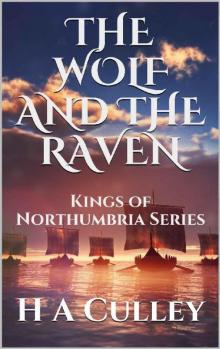 The Wolf and the Raven
The Wolf and the Raven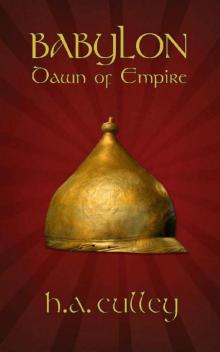 Dawn of Empire
Dawn of Empire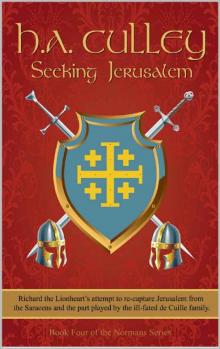 Seeking Jerusalem
Seeking Jerusalem The Strategos
The Strategos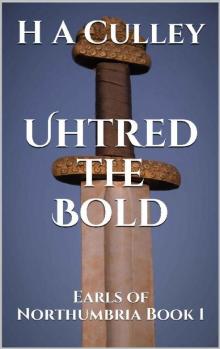 Uhtred the Bold
Uhtred the Bold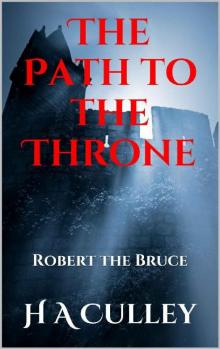 The Path to the Throne
The Path to the Throne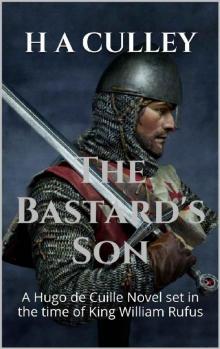 The Bastard's Son
The Bastard's Son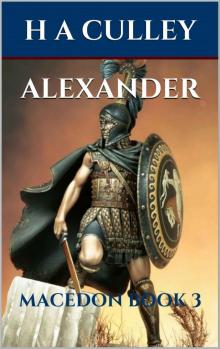 Alexander
Alexander The Great Heathen Army
The Great Heathen Army The Sacred War
The Sacred War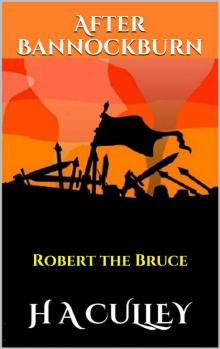 After Bannockburn
After Bannockburn Caging the Lyon
Caging the Lyon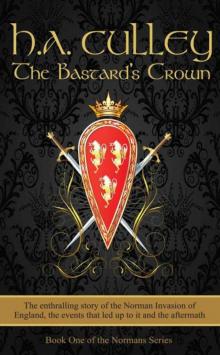 The Bastard's Crown
The Bastard's Crown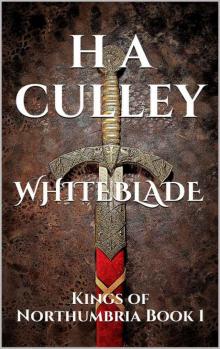 WHITEBLADE
WHITEBLADE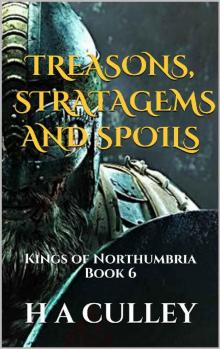 TREASONS, STRATAGEMS AND SPOILS: Kings of Northumbria Book 6
TREASONS, STRATAGEMS AND SPOILS: Kings of Northumbria Book 6 THE POWER AND THE GLORY: Kings of Northumbria Book 4
THE POWER AND THE GLORY: Kings of Northumbria Book 4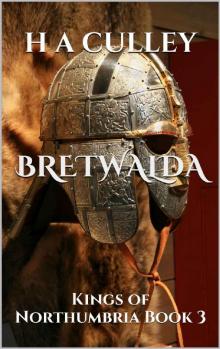 BRETWALDA: Kings of Northumbria Book 3
BRETWALDA: Kings of Northumbria Book 3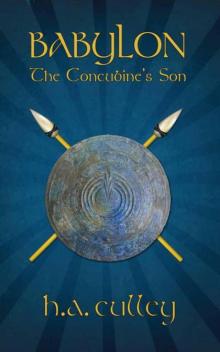 The Concubine's Son
The Concubine's Son The Fall of the House of Æthelfrith: Kings of Northumbria Book 5
The Fall of the House of Æthelfrith: Kings of Northumbria Book 5 TREASONS, STRATAGEMS AND SPOILS
TREASONS, STRATAGEMS AND SPOILS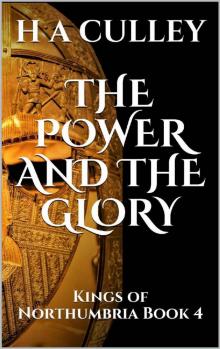 THE POWER AND THE GLORY
THE POWER AND THE GLORY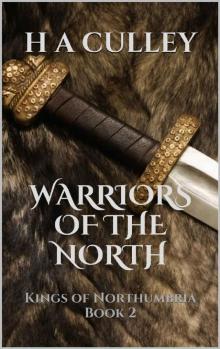 WARRIORS OF THE NORTH
WARRIORS OF THE NORTH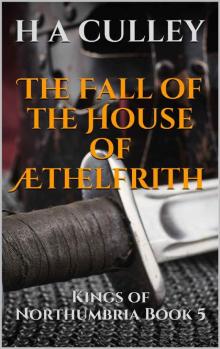 The Fall of the House of Æthelfrith
The Fall of the House of Æthelfrith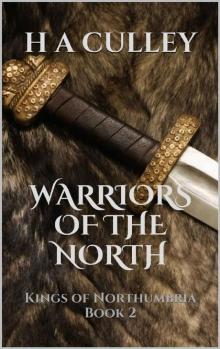 WARRIORS OF THE NORTH: Kings of Northumbria Book 2
WARRIORS OF THE NORTH: Kings of Northumbria Book 2 WHITEBLADE: Kings of Northumbria Book 1
WHITEBLADE: Kings of Northumbria Book 1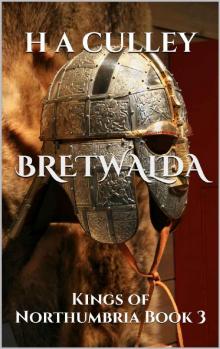 BRETWALDA
BRETWALDA